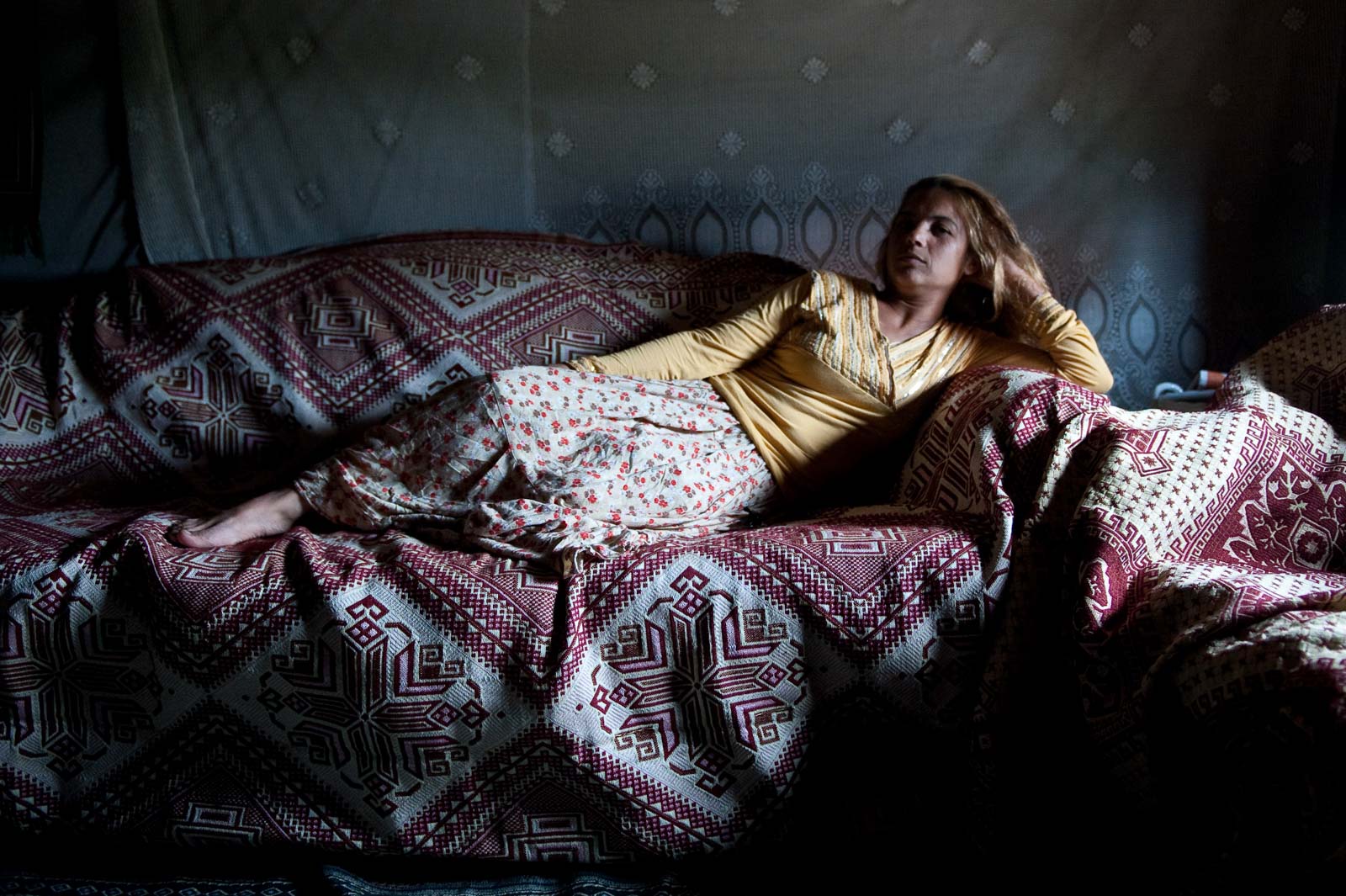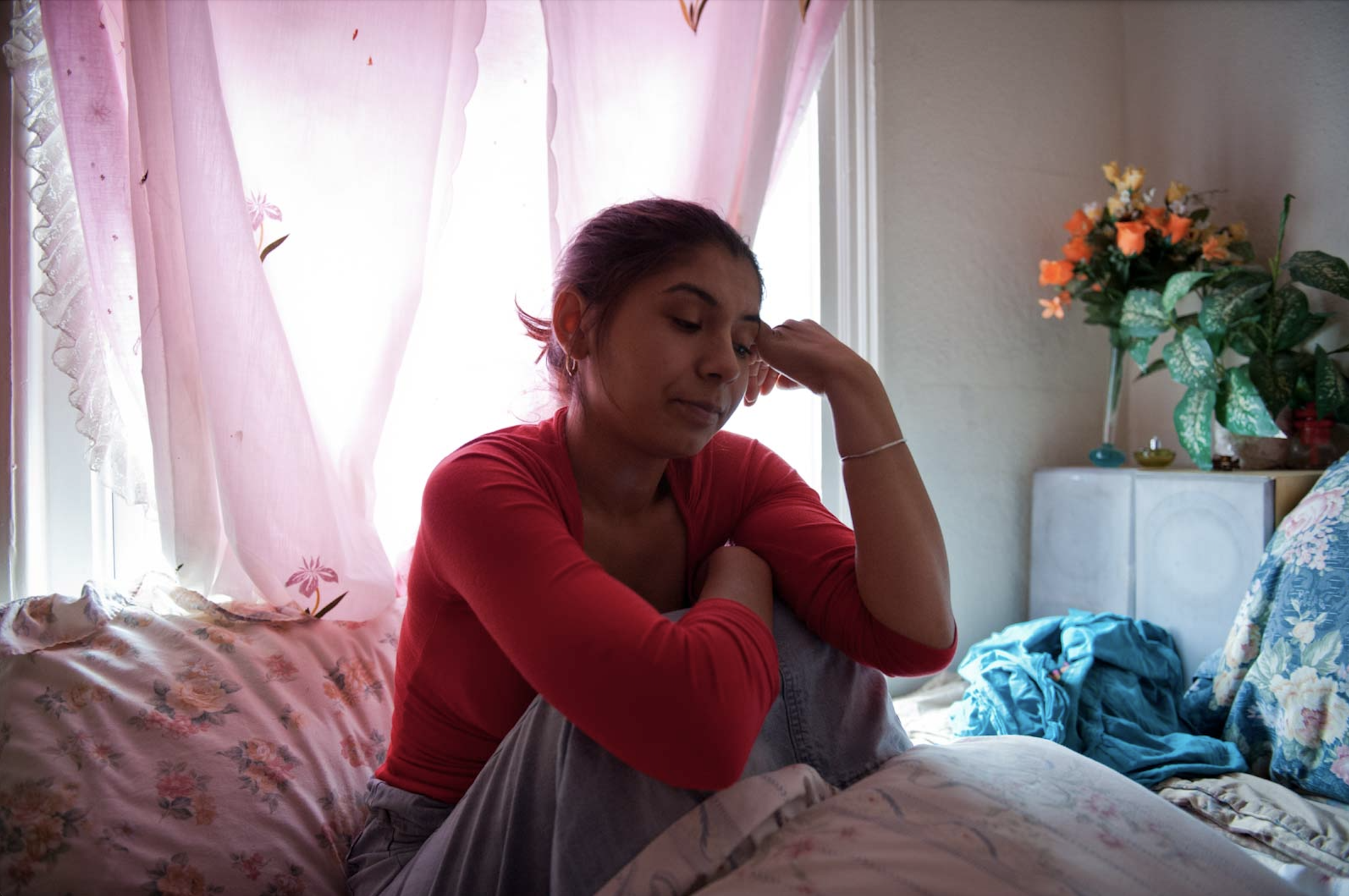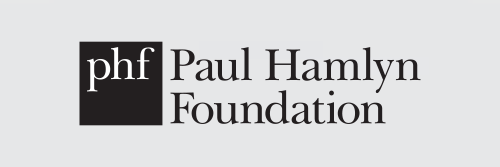


A Spotlight On… Ciara Leeming
Open Eye Gallery’s interviewer-in-residence, Sara Sarf, speaks with Ciara Leeming about the dual role of being journalist and photographer, her work with Roma families living in the UK and her latest project Levy Lockdown Portraits. Ciara describes the process of working through lockdown and the impact that it has had on her practice.
Sara
I have so many questions and I’m so excited to hear about the projects you did. I’m from Hungary, so when I read about the Roma project, it’s pretty similar to Hungary, pretty harsh situation going on, which I haven’t even noticed for a long time.
Ciara
I’ve been to Hungary and I met Roma people in Hungary. I went with some teachers to Hungary maybe in about 2013. There were people that work with Roma communities in this country, so we went to visit Open Societies, and we went to some villages around Budapest, and we went to the 8th district, an inner-city neighbourhood that’s quite deprived. It’s sort of a Roma and migrant neighbourhood, where people live in these quite small houses crumbling apart with lots of stuff in it. Yeah, it was interesting going to the schools and seeing how it is. It is very different in a lot of ways to Romania, but also quite similar, although I have not been everywhere in Romania.
How would you describe your practice because on your website it says photographer and journalist, and I really like that? Not either-or, but both?
Yes, both. I’ve got two kind of parallel practices – two parts of what I do. The one half is a journalist. I’m trained as a newspaper reporter so that’s where I started off, working for the local paper. At this point I didn’t have very much interest in photography, it’s always been about the stories for me. I became a freelance journalist in 2006. I started working on quite long-term projects, finding a subject and following that subject for a long period of time and doing it doggedly. The first story I was covering in this way was an urban regeneration programme in the north of England. It was a government led New Labour policy that was highly controversial at the time. There were whole neighbourhoods of terraced houses being boarded up because the authorities thought that they needed to be knocked down, and more modern housing put in their place. The expression that people used to use was ‘tin up’ – metal over the doors and the windows and then you would get maybe one or two families stuck there inside having a miserable time because of all the vandalism and mess all the time. And so, I started covering that as a writer, over a really long period of time. I had a very good photographer friend who encouraged me to do visual photo projects on this issue. So quite quickly I started taking photos alongside when I was writing about something. Sometimes I was able to sell those photos to a publication and bit by bit I got more confident. I think I got into photography more seriously in about 2008 and then I ended up doing an MA course in photojournalism.
Would you describe your style or your method of photography as photojournalism?
I don’t think I would. There’s a lot of debate at the moment about representation within photography, who’s taking those photos, who are they taking the photographs of, what are their motivations, what’s their engagement at this time and afterwards, where the power lies…. I am a bit uncomfortable about the term photojournalism. I would just call myself a photographer and what I do is a form of documentary photography. But at the same time, it is journalism, I see it as journalism. I think for me it’s whatever suits different stories.
I really liked your lockdown project photos from the windows. It’s such a nice way of looking at COVID but also looking at the situation that we’re in, from a little bit outside seeing other people.
It did turn into a nice project and it was a complete surprise in a lot of ways. A couple of weeks into the lockdown I had this idea in my mind to photograph people living on my street. I thought that would be a nice little microcosm of the area where I live. I really enjoyed doing it because I wasn’t getting a lot of me-time at that point, and people really liked it as well. The pictures were quite interesting from the start and when I started putting it on social media people really liked it and it became a thing. Then people came to me in the neighbourhood asking to be part of it and then I had to redress the balance a bit more to make it a bit more representative. I used a lot of different approaches to make it a bit more inclusive of the community and they got on board with it. I’d photograph maybe five households a day, while walking to the park with my kids and I would pick a few houses near each other to photograph.
Do you think it was a community project at the end – you started it but then people came together at the same time?
Yeah, it felt like something that people could unite around. It felt like one of those little things that people got behind and sort of brought people together a little bit. Eventually, I did a Kickstarter over the summer and made a book, called Levy Lockdown Portraits. Some of the work was exhibited at our local Arts Festival alongside other lockdown projects from the area. There were about four different bodies of work exhibited and we were so lucky because it happened during the half term in October and we were able to have people in.
You also shared this project on Instagram. Do you not think that’s an accessible way for people to see it as well because they could just click through it if they couldn’t make it?
Yeah, although I didn’t share everything on it. Social media worked on different levels. People from elsewhere could see it as well. There were some people who supported the project through the Kickstarter from other countries. They only needed to donate a small amount (15 pounds) and as a reward, they would get a book. So that was lovely, and I think people resonated with it. You don’t have to be from my neighbourhood to appreciate it because we all want a collective experience.
Since lockdown, you did the lockdown project, but otherwise did you manage to work on other projects or write, or were you more focused on family and surviving?
Honestly, it’s very hard when you’ve got young children to do anything else when they’re not at school. They just take up a lot of time and mental energy. So, when they went back to school in September, I was able to write again for a glorious three months. And then since this lockdown I’m just not really in a position to work because I’m sitting over a computer with the kids all day. So, it’s quite hard to fit other things in really. I’m doing a follow up to the original lockdown project, but it’s more of a participatory project. I decided to try and create a group out of the people that were in my book project. I made up some craft packs (disposable camera, sketchbook, post-it notes, stickers, colouring pencils etc.) and I wrote a few briefs that people could use if they wanted to (one of them was about home, one was about routine, one was about gratitude) based around COVID, how our lives have changed and the internal space that we’re living in. Originally, I recruited six women. I made them all a print of the picture that I have taken of them last time. I gave them a copy to keep for themselves, another copy but that had a big white margin around it and I also gave them a Sharpie pen. I asked them to respond to the image in some way and the moment that we’re in, historically. The reason why I’m interested in documenting this time is that it is a news event. I don’t think I’d be interested in doing this kind of work if it wasn’t for the context around it. And I also gave them a stamped envelope and a few blank postcards with stamps on as well as my address. Ultimately what I’m hoping for is a mixed media kind of response. I’d like them to write things down in their handwriting, take photos either on their phone or on the disposable camera, collaging or sketch.
I don’t quite know what I’m going to make at the end, but I want it to be a bit of a mishmash of different stuff. I also thought that I should just open it up a little bit more to other people in the area. I set up a closed Facebook group and I added everybody on my friends list, who is from Levenshulme, whether they were in the original project or not and invited them to submit photos of lockdown with a few sentences. I’ve also put a prompt on about home (both thinking about home and what home represented here) and a few people have responded to that, while others submitted photos of things that they’ve taken over the past year. It’s just the beginning at the moment but I think I’m going to amass a certain amount of content and then maybe create a newspaper or zine.
It sounds like a conversation with your Levy Lockdown Portraits Project.
Yes, and at a time when we’re all talking loads on the computer and we’re all sick of this sort of thing it is quite nice to try and think more analogue (like sketchbooks, scrapbooks and sending things by the posts). Ultimately, it’s about the stories, more than the images, so, it’s like looking for threads. What I’m trying to do is to just find those little things and get people to tell me more about that. For me, photography helps me do that. It’s about having those little moments of conversation afterwards.
Also, you’re making connections where you live, so you’re building a community basically with a project.
Yeah, exactly. As I’ve got older and got more experienced and I’ve learned more about all the debates around all these issues that we’re talking about, the idea of working in my own backyard has become more and more important to me. The importance that you’re answerable to your community.
Have you done projects like these before? Working with the community and people on parts of the project?
I’ve not done anything quite like this before. I’ve been brought into a couple of schools in the past, where I would run a project over the course of a week. One was as a journalist where I made a newspaper with the children, the other one was a Roma project in Leeds, where we gave them cameras and went around the community with them and sent them home with disposable cameras. I’ve not worked with adults either in a formal group. So, it’s all new and it’s all to do with the circumstances of the time. I have to be innovative in finding solutions.
Have you worked in a similar way before on projects? Your new project sounds very much what could be called socially engaged practice that Open Eye Gallery is focused on.
It has been influenced by them. I’ve been doing a course called ‘Crossing Sectors’ with Open Eye since September one day a week. Before that, without knowing, I would argue that the work I’ve done with Roma individuals and families were socially engaged, but in a different way.
Tell me more about the Roma Project?
For my MA I was interested in doing a photo project on the Roma community, as I had worked with English Romanies previously. When Romania joined the EU in 2007 and from that point, more and more people came to this corner of Manchester. Within a relatively short space of time we had quite a few Roma families moving from the same area of Romania to my neighbourhood. I found them interesting because they’re very visibly different because of the way they dress, but yet they’re also very insular. Their level of English at that point was very poor. They were excluded from the jobs market by the rules, they were only allowed to be self-employed or work in food processing. So, they were coming here because they have such a terrible time in their own country, but they weren’t having a very easy life here either. There were some community cohesion problems that caused tension in the neighbourhood. A lot of people ended up selling the Big Issue as a form of job and obviously I worked for the Big Issue a lot. That’s kind of the entry point for me and my project. I knew it would be really challenging to get into this community, but also interesting. I started writing features about them for Big Issue North magazine, but at the same time I was also trying to find a family or maybe more than one family, so they would let me photograph them.
I was getting a bit frustrated after months of looking and trying to make contact with them and then about six months after my first story, Big Issue North contacted me and said we’ve got this vendor who they would like us to do a feature on. It was Ramona. She was selling the magazine part time and also working as an interpreter. It went from there; we did this feature and I photographed her selling the magazine to go with the story. Then I asked if it would be possible to come and do some portraits at her house and she agreed. She is just one of those people who is very open hearted, she’s one of a kind, really. After working on the story with Ramona I thought this might be a potential person that I could work with. I’ve got this idea to do a photo project where I’m documenting someone’s life. When I proposed this to her she was just totally up for it. I went with her to Romania to visit her family. She just told them that I was a friend, a photographer and they could trust me.
When I made the book and showed it to her and her family everyone was so much warmer towards me. Before, they tolerated me, but they kept me a bit at arms length. Once I made the actual book, we sent a copy to her family in Romania and everyone was happy with the way they’d been represented.
With the work with Ramona, there were tangible results for her because of the project as she was able to bring her daughter to the UK and was invited to talk about her work at the UN in Geneva.
Are you planning to work with the Roma community on projects in the future?
Maybe. I think the problem is where I am in my life at this point. Projects like these are very time and emotionally consuming. I wouldn’t say no but I would find it difficult to work in that way with any community right now.
What about socially engaged practice with communities?
I would like to start working more like that and if the opportunities arise. It’s probably a more practical way of working now where there’s a little bit less emotional involvement, where you don’t have to be giving all your energies to people in quite the same way.
Are you thinking about teaching what you do (either photography or journalism)?
I do a little bit of guest lecturing already. I teach in a visual anthropology MA course every year at Manchester University. I talk about all my work, but particularly my Roma work. I really enjoy that, it is a possibility.
I think a lot of what I’ve done in the last few years has been relatively organic, not very planned, and quite responsive. I don’t really have a great plan. I think even just keeping on surviving as a freelancer in this industry is quite an achievement. But it’s interesting and it gives you a certain freedom. I’ve been able to take myself off to different countries to work.

